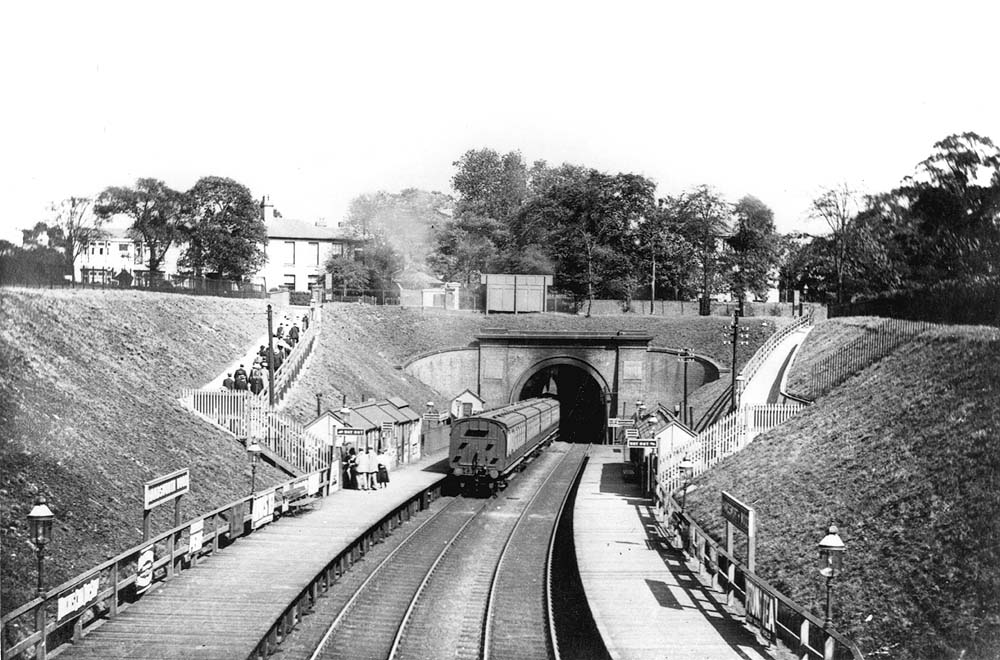 |
|
London North Western
Railway:

Midland
Railway:

Stratford
Midland Junction Railway
|

|
LMS Route: Birmingham - Soho Road- Perry Barr -
Birmingham
Handsworth Wood Station: lnwr_hw1516
 |
Looking towards Handsworth Junction as a LNWR four-coach
local passenger service enters the short tunnel. Philip Millard of the LNWR
Society writes, 'The train is a four-coach cove-roof Birmingham District
Set, of which 30 were built from May 1904 to January 1907. The coaches are two
brake-thirds with five compartments to D.338, a tri-composite (5F 1S 1T) of
D.182, and one bi-composite (6S 2T) of D.285. Of course, the seconds were
downgraded to thirds in 1912, and the bi-composites were renumbered as thirds
accordingly'. The road above the tunnel mouth is Hamstead Road and the two
paths leading to either platform are easily seen. The basic but adequate
station facilities for the local passenger services are made up of a number of
single story timber structures all located at the tunnel end of the station.
The platforms are also built out of timber reflecting the view of the
authorities at the time of its opening in 1896 that the station would never be
a significant revenue generator. The platform structures are similar to others
erected at Perry Barr and elsewhere in the middle
of the 1890s such as those seen at 'Napton &
Stockton' and 'Flecknoe' on the Weeden line.
In many respects it could be argued that these utilitarian buildings were a
response to the economic shocks being felt in the 1890s*.
* The origins of the crisis of the 1890s had
similar features to those of the 2008-09 crisis. The huge international
investment boom of the late 1880s was based on soaring expectations about the
economic prospects for newly-settled countries such as the US, Argentina and
Australia. Investments were often based on very limited knowledge and vast sums
were placed in land, railways and urban construction that could not possibly
produce the profits necessary to fulfil expectations. The crisis of 1890 was
triggered in Argentina by an extravagant government's growing inability to pay
its debts and the resulting impact on the London merchant bank, Baring
Brothers. Barings had underwritten two large government-sponsored loans which
they found they could not off-load to increasingly sceptical investors: in
November 1890, they were unable to meet their obligations. They turned to the
Bank of England for support. The Bank arranged loans in London that prevented
Barings from collapse. But the near-collapse of one of the most prestigious
investment banking houses in the world was a profound shock to the
international investment community, and it drained confidence in the
international financial system and had global knock -on effects. International
lending was severely cut for the next decade.
From a paper 'Crisis and recovery: historical
perspectives on the Coalition's economic policies' by Peter Cain , Scott Newton
dated 2nd March 2011.
 back back

|
